Appearance
What does power look like? Are women judged differently than men because of the way they look or dress? How do clothes convey power? Join us as we explore appearance and leadership.
Explore how the press covers appearance over substance. Trace the evolution of “the power suit.” When women lead, nasty nicknames often follow. Discover how insults are turning into admiration. Meet women who refused to fit the mold. Listen to our podcast with Mahnaz Afkhami on the new generation of powerful women in the Muslim world and read Curator Masum Momaya's introduction to this topic.
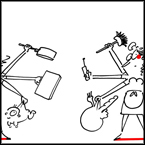 |
Cartoon as a Political Manifesto >>Cartoonist Catherine Beaunez illustrates women’s place in French society with biting humor. See examples from her book of political cartoons: On les aura!or“Let’s get them!” |
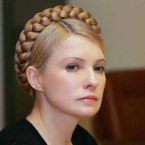 |
Fashion Is Political >>Interview: U.S. fashion editor Robin Givhan explains that politicians--both male and female--craft what they wear as carefully as what they say. |
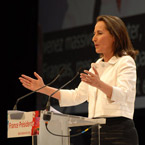 |
The Power Suit >>From beards to battle armor, women leaders through history have had to “engineer” their wardrobes to establish, emphasize and flaunt their power and authority. |
 |
Iron Ladies Uncovered >>Being “tough as iron” is a good thing, unless you’re an “Iron Lady.” Women who gain power often get called nasty names--from “Attila the Hen” to, simply, “A Man.” |
 |
Follow the Leader >>Ellen Johnson Sirleaf became Liberia’s first female head of state in 2006. The documentary Iron Ladies of Liberia follows Sirleaf’s historic first year in office. |
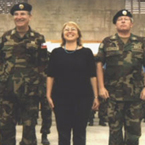 |
Señora Presidenta >>In a few short years, President Michelle Bachelet of Chile went from being “a nobody” to holding the highest office in the land. The film La Hija del General (The General's Daughter) profiles her meteoric rise to power. |
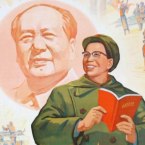 |
Madame Mao >>Notorious first lady Jiang Qing of China used propaganda posters to spread her influence. Stefan R. Landsberger dissects her rise and fall though these rare images. |
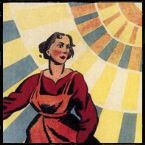 |
Emancipated Woman--Build Up Socialism >>Image propaganda isn’t just for the famous. Pictures of strong, liberated “everywomen” dominated Soviet political posters for decades. |
 |
First Money, Then Power >>Microcredit loans start small, but change lives. Photographer Phil Borges profiles five women whose business success speaks of hope and change. |
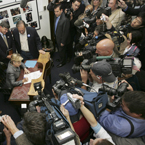 |
Ten Questions with Erika Falk >>Interview: In Women for President: Media Bias in Eight Campaigns, Falk explains that not much has changed in United States since Victoria Woodhull ran for president in 1872. |

